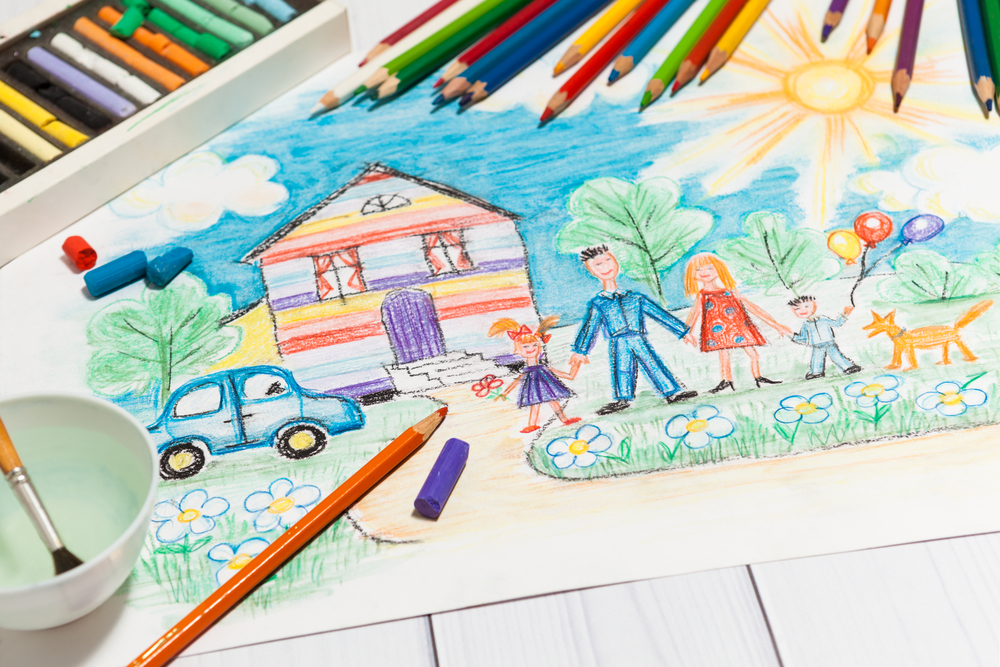The awareness of mental illnesses forms a major part of its treatment. Fortunately, dealing with certain mental illnesses and their subsequent treatments have come a long way. One treatment that has recently gained prominence as a viable therapeutic remedy, is art. The reason being, it engages the creative part of the brain and employs that creativity to treat mental health issues.
Sharmeen Kaur Khurana, an art-based therapist at Sukoon Health, Gurgaon, defines art therapy as, “A form of psychotherapy where art is used to express and communicate as a non-verbal means. Each person’s story is unique and art therapy is a great medium to explore and narrate those stories. It engages in the creative process rather than the artistic skill of a person.”

While going about the process of art therapy, experts suggest that for the first session with the client, it is imperative to take down all the details about them--their various concerns or problems they are facing. Any cognitive problems or impairments that may hamper a client’s experience are also taken into consideration. Therapeutic goals, as to what the therapist and patient want to achieve through art therapy are also set. Finally, the art therapy session involves working on different themes or situations, wherein the patient is given a particular scenario or emotion and asked to express it through their art. The therapist’s main job is to observe them; see which tools they are choosing for their artwork, any physical reactions, how they feel upon completing the task. The therapist then proceeds to help them address a pressing concern, should they face one. The decision-making process (what they finally draw) rests entirely with the patient. “An art therapy session is first and foremost a therapeutic experience. Here, the focus lies in the expressive, cathartic, and introspective aspect of art as opposed to an art class where the focus lies in the aesthetic of the art. An art therapy session is a collaboration between the client, therapist, and the artwork working through what problems a client may bring up during the session, using various art forms,” adds Khurana.
Art therapy is recommended when it is felt that there are some unresolved issues such as anxiety disorders, depressive episodes, trauma, which are best expressed via art. “It helps to discover unexplored parts of yourself and increase self-reflection through a range of art materials. It can be used to identify and manage these unresolved conflicts and express difficult emotions, increase self-awareness and self-discovery, improve social and emotional understanding, and reduce stress and anxiety by building positive coping skills. Art therapy can be recommended to facilitate personal growth and improve mental and emotional functioning,” says Khurana.

Art therapy is used to set therapeutic goals for different mental disorders. Khurana adds, “Every issue and every disorder manifests itself differently in different individuals. Every individual is unique with their individual life experiences, socio-economic status, genetic makeup, trauma, physique, parenting, etc. As a result, the way an illness impacts an individual is also different. However, there are some major goals that art-based therapy can help achieve with regards to each issue.” According to her, they are:
Attention Deficit Hyperactivity Disorder (ADHD)
Using art as therapy for ADHD forces the patient to focus, thus increasing concentration, stimulation, and engagement. This in turn teaches them to self-soothing, bringing about some structure in their thoughts and actions, helping them cope with impulsivity, improves their social skills and self-control.
Anxiety Disorders
The benefits of art therapy for anxiety disorders are relaxation, working towards diminishing the physiological symptoms of anxiety, grounding (so that the mind doesn’t go into overdrive), self-exploration and expression, shifting focus from cognition to affect (action-based thought process), focus and concentration, and finally catharsis as you paint your thoughts.
Depression
The art based therapy goals for depression involve emotional regulation, exploration of purpose (as one mostly feels lost and hopeless), working on self-esteem, self-efficacy, expression of catharsis, and building positive coping skills.

Addiction
The goals here look at positive motivation, developing positive coping skills (so there is less dependence on addictive substances), identifying triggers and cues, exploring interpersonal relationship, increasing self-awareness, expressing difficult emotions, and identifying and managing stressors.
Trauma
The goals are focused on self-regulation, self-soothing, modulation of emotional and sensory responses (how you react to surroundings), reducing hyper-arousal (which can be due to memory or the environment), relaxation, containment and grounding, catharsis and emotional expression, developing healthy coping skills, and reconnecting with the body and mind.
Eating Disorders
Art-based therapy goals for eating disorders range from catharsis and emotional expression, reclaiming the body, working on interpersonal relationships, setting attainable goals to developing insights about your own thoughts and behaviours, processing shame and guilt and letting it all out, improving the concept of self-esteem, and a healthy engagement with self and environment.
While there are no specific levels to art therapy, it is mostly used across individuals in different settings. “Art therapy can be used for individuals as well as groups. It is used for various settings such as hospitals, clinics, schools, trauma centres, prisons, rehabilitation centres, and halfway homes,” mentions Khurana.